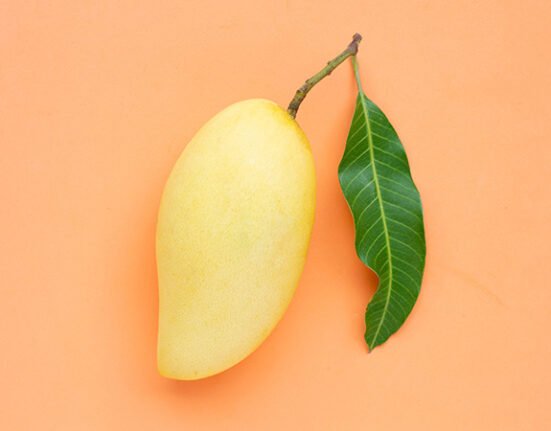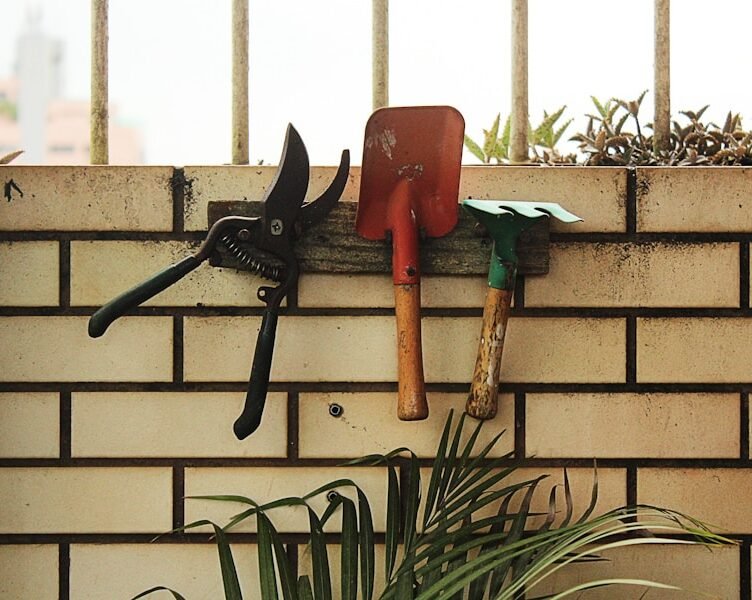Selecting the appropriate mango variety is crucial for successfully growing juicy mangoes in your backyard. With hundreds of varieties to choose from, each boasting unique flavor profiles, textures, and growth requirements, it’s essential to research and select a variety that thrives in your local climate and growing conditions. Popular varieties for home cultivation include Alphonso, Kensington Pride, and Haden.
Some mango varieties are better suited to tropical climates, while others can tolerate cooler temperatures. Additionally, consider the mature size of the tree and the available space in your backyard, as some varieties are compact and suitable for smaller areas, while others require ample room to spread out. When choosing a mango variety, flavor profile is another critical factor to consider.
Mangoes can exhibit a range of flavors, from sweet and tropical to tangy and citrusy. Consider your personal taste preferences and the type of mango you enjoy consuming. The texture of the fruit is also an important consideration, with some varieties featuring a smooth, creamy texture, while others are more fibrous.
By selecting a mango variety that aligns with your preferences and growing conditions, you’ll be well on your way to growing juicy, delicious mangoes in your backyard.
Key Takeaways
- Choose the right mango variety for your climate and space
- Provide ideal growing conditions with plenty of sunlight and well-draining soil
- Properly prepare the soil and fertilize the mango tree for optimal growth
- Use watering and pruning techniques to promote healthy fruit production
- Protect mango trees from pests and diseases to ensure a bountiful harvest
Ideal Growing Conditions for Mango Trees
Ideal Climate Conditions
Mango trees thrive in tropical and subtropical climates, where they can receive plenty of sunlight and warmth. If you live in a cooler climate, consider planting your mango tree in a sheltered spot or using a greenhouse to create a warmer microclimate.
Soil Requirements
Mango trees require well-draining soil to prevent waterlogged roots, so be sure to choose a location with good drainage. In terms of soil pH, mango trees prefer slightly acidic soil with a pH range of 5.5 to 7.5. You can test your soil’s pH using a simple soil testing kit available at most garden centers. If your soil is too acidic or alkaline, you can amend it with lime or sulfur to adjust the pH to the ideal range for mango trees.
Space and Growth
It’s also important to provide ample space for your mango tree to grow – these trees can reach heights of 30 to 100 feet and have a spread of 30 feet or more, so be sure to plant them in a location where they have room to grow without overcrowding other plants or structures. By ensuring they have plenty of sunlight, warmth, well-draining soil, and adequate space to grow, you’ll set the stage for a successful mango harvest in your own backyard.
Proper Soil Preparation and Fertilization
In addition to providing the ideal growing conditions for your mango trees, proper soil preparation and fertilization are essential for growing juicy mangoes in your backyard. Mango trees require nutrient-rich soil to support their growth and fruit production. Before planting your mango tree, it’s important to prepare the soil by incorporating organic matter such as compost or well-rotted manure.
This will help improve soil structure, fertility, and moisture retention, providing a healthy foundation for your mango tree to thrive. In terms of fertilization, mango trees benefit from regular applications of balanced fertilizer throughout the growing season. A complete fertilizer with a balanced ratio of nitrogen, phosphorus, and potassium will provide the essential nutrients that mango trees need for healthy growth and fruit production.
It’s important to follow the manufacturer’s recommendations for application rates and timing to avoid over-fertilizing, which can lead to excessive vegetative growth at the expense of fruit production. Additionally, consider using organic fertilizers such as fish emulsion or seaweed extract, which provide a slow-release source of nutrients and help improve soil health over time. By providing proper soil preparation and regular fertilization, you’ll ensure that your mango trees have the nutrients they need to produce juicy, flavorful fruit in your backyard.
Watering and Pruning Techniques
| Factors | Optimal Conditions |
|---|---|
| Sunlight | Full sun for at least 6 hours a day |
| Soil | Well-draining, fertile soil with pH of 5.5-7.5 |
| Watering | Regular watering, especially during dry periods |
| Pruning | Regular pruning to promote air circulation and fruit production |
| Fertilization | Regular application of balanced fertilizer during growing season |
| Pest Control | Monitor for pests and diseases, use organic control methods |
Proper watering and pruning techniques are essential for maintaining healthy mango trees and promoting fruit production in your backyard. Mango trees require regular watering, especially during dry periods or when they are young and establishing roots. However, it’s important to avoid overwatering, as this can lead to root rot and other problems.
To determine when to water your mango tree, check the soil moisture level by inserting your finger into the soil – if it feels dry to the touch about an inch below the surface, it’s time to water. When watering your mango tree, provide a deep, thorough soaking rather than frequent shallow watering. This will encourage deep root growth and help the tree withstand periods of drought.
Additionally, consider using mulch around the base of the tree to help retain soil moisture and suppress weeds. In terms of pruning, mango trees benefit from regular maintenance pruning to remove dead or diseased branches, improve air circulation, and shape the tree for optimal fruit production. Pruning should be done during the dormant season when the tree is not actively growing.
Remove any branches that are crossing or rubbing against each other, as well as any water sprouts or suckers that are growing from the base of the tree. By providing proper watering and pruning techniques, you’ll help maintain healthy mango trees that produce juicy, delicious fruit in your backyard.
Protecting Mango Trees from Pests and Diseases
Protecting your mango trees from pests and diseases is essential for ensuring a successful harvest of juicy mangoes in your backyard. Common pests that can affect mango trees include aphids, scale insects, mites, and fruit flies. These pests can cause damage to the leaves, flowers, and fruit of the tree if left unchecked.
To prevent pest infestations, consider using natural predators such as ladybugs or lacewings, or applying insecticidal soap or neem oil as a safe and effective treatment. In terms of diseases, mango trees are susceptible to fungal infections such as anthracnose and powdery mildew, as well as bacterial diseases like bacterial black spot. To prevent disease problems, it’s important to provide proper air circulation around the tree by pruning and thinning branches as needed.
Additionally, avoid overhead watering that can promote fungal growth on leaves and fruit. Consider using disease-resistant mango varieties if disease problems are common in your area. By taking proactive measures to protect your mango trees from pests and diseases, you’ll help ensure a bountiful harvest of juicy mangoes in your backyard.
Harvesting and Ripening Tips for Juicy Mangoes
Identifying Ripe Mangoes
When it comes time to harvest your juicy mangoes from your backyard tree, it’s essential to know when they are ripe and ready to pick. Mangoes typically ripen on the tree and are ready for harvest when they reach their full size and develop a mature color – this will vary depending on the variety you are growing.
Determining Ripeness
To determine if a mango is ripe, gently squeeze it – a ripe mango will give slightly under pressure and have a sweet aroma at the stem end. If you’re unsure if a mango is ripe, you can perform a taste test by sampling a small piece of fruit – ripe mangoes will have a sweet, tropical flavor with a smooth texture.
Harvesting and Ripening
Once you’ve determined that your mangoes are ripe, carefully pick them from the tree using pruning shears or a sharp knife to avoid damaging the fruit or the tree. After harvesting your ripe mangoes, you can allow them to ripen further at room temperature before enjoying them fresh or using them in recipes. To speed up the ripening process, place unripe mangoes in a paper bag with a ripe banana or apple – these fruits release ethylene gas which helps accelerate ripening.
Enjoying Your Homegrown Mangoes
By following these harvesting and ripening tips, you’ll be able to enjoy delicious, juicy mangoes from your own backyard tree.
Enjoying the Fruits of Your Labor: Delicious Mango Recipes
Once you’ve harvested your juicy mangoes from your backyard tree, it’s time to enjoy the fruits of your labor by incorporating them into delicious recipes. Mangoes are incredibly versatile fruits that can be used in both sweet and savory dishes – from smoothies and salads to salsas and desserts. One popular way to enjoy fresh mangoes is by making a tropical fruit salad with a mix of ripe mango chunks, pineapple chunks, kiwi slices, and strawberries.
Toss the fruit with a squeeze of fresh lime juice and a drizzle of honey for a refreshing and healthy dessert or snack. Another delicious way to use fresh mangoes is by making a creamy mango lassi – a traditional Indian drink made with ripe mango puree, yogurt, milk, sugar, and a pinch of cardamom. Blend all the ingredients together until smooth and serve chilled for a refreshing beverage on a hot day.
For a savory option, consider making a spicy mango salsa with diced ripe mangoes, red onion, jalapeno pepper, cilantro, lime juice, and a pinch of salt. This vibrant salsa is perfect for serving with grilled fish or chicken, or simply scooping up with tortilla chips. If you’re feeling adventurous in the kitchen, you can even try making homemade mango ice cream or sorbet using fresh pureed mangoes – these frozen treats are perfect for cooling off on a hot summer day.
Overall, there are countless ways to enjoy delicious mango recipes using fresh fruit from your own backyard tree. Whether you prefer sweet or savory dishes, there’s no shortage of creative ways to incorporate juicy mangoes into your culinary repertoire. In conclusion, growing juicy mangoes in your own backyard is an incredibly rewarding experience that allows you to enjoy fresh, flavorful fruit right outside your door.
By choosing the right mango variety for your climate and preferences, providing ideal growing conditions for your trees, preparing the soil and fertilizing properly, implementing proper watering and pruning techniques, protecting against pests and diseases, harvesting and ripening at the right time and enjoying delicious recipes with fresh fruit – you can ensure a bountiful harvest of juicy mangoes year after year. With some patience and care, you’ll be able to savor the sweet taste of success as you bite into a perfectly ripe mango grown in your own backyard. So why not start planning now?
With these tips in mind you can start enjoying juicy mangos sooner than you think!
FAQs
What are the best conditions for growing juicy mangoes in your backyard?
Mango trees thrive in tropical and subtropical climates with plenty of sunlight and well-drained soil. They require a minimum of 40 inches of rainfall annually and temperatures above 30°F.
How long does it take for a mango tree to bear fruit?
Mango trees typically take 3 to 6 years to start bearing fruit, depending on the variety and growing conditions.
What are some common pests and diseases that affect mango trees?
Common pests that affect mango trees include mango fruit flies, scales, and mealybugs. Diseases such as anthracnose, powdery mildew, and bacterial black spot can also impact mango trees.
How can I improve the fruit quality of my mangoes?
To improve the fruit quality of your mangoes, ensure that the tree receives adequate water, sunlight, and nutrients. Pruning the tree to improve air circulation and reduce disease pressure can also help improve fruit quality.
When is the best time to harvest mangoes?
Mangoes are typically ready to harvest in the summer months, between June and August, depending on the variety. The fruit should be picked when it reaches full size and starts to develop a mature color.








1 Comment